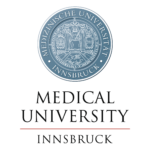Research
Overview
Nowadays, digital patient information is pivotal for prevention, early detection, diagnosis and treatment of diseases. In particular, medical decision making is driven by combining information across various data modalities such as imaging data (computer tomography (CT), magnetic resonance imaging (MRI), ultrasound (US), etc.), electrocardiographs (ECGs), electronic health records and laboratory data. However, despite routinely collecting large amounts of patient data, most current health care setups are far from exploiting their full potential in clinical practice.
The aim of our research is to unfold this potential in the context of cardiovascular medicine including the following strategies:
Development of new AI/ML algorithms
Our goal is to use and develop state-of-the-art AI/ML methods for prediction and early detection of cardiovascular pathologies such as myorcardial infarction, arrythmias and sudden cardiac death from real-world, i.e., routine, clinical data. One research avenue will be dedicated to developing ML models that are capable of making predictions from small clinical datasets as commonly available on a single hospital scale but still generalize well among different hospitals (i.e., out-of-distribution settings). From a medical perspective a particular focus will be on scenarios where easily accessible modalities (e.g., ECGs) at the onset of life-threatening events are used to predict clinical outcomes that are only detectable at late time points through advanced diagnostic modalities (e.g., MRI). Early prediction of such “late-outcomes” is very relevant, as it allows to take advantage of a highly valuable time-window for targeted therapeutic intervention shortly after event onset.
Digital biomarkers
Biomarkers are frequently used in clinical routine to assess and monitor patient’s health status and treatment efficacy. Our goal is to develop new digital biomarkers based on digitally available patient information. One research direction is dedicated to multimodal digital biomarkers that combine various measurement modalities (e.g., ECG, blood pressure, imaging data, etc.) as opposed to biomarkers based on a single measurement modality, e.g., blood pressure. To derive such biomarkers we develop, among other strategies, AI/ML methods capable of integrating various data modalities and their respective time-dependence. Furthermore, we will investigate biomarkers based on novel data modalities such as speech and videos.
Data curation in clinical and non-clinical settings
In clinical routine many measurements are performed that never find their way into a central data repository in a standardized way. Our goal is to develop practical strategies that can be easily integrated in clinical practice for building up a data warehouse structure which is vital for research directions as outlined above. Furthermore, we also investigate the potential of data generated by wearables, e.g., smartphones, which provide additional health information under more “natural” conditions compared to in-hospital settings.
Quantum technologies
As a more futuristic research direction we will also work on health care applications of quantum technologies such as quantum sensors and quantum computers.
Publications
- D. Basilewitsch, C. Dlaska, W. Lechner, Comparing planar quantum computing platforms at the quantum speed limit, Phys. Rev. Research 6, 023026 (2024), DOI: 10.1103/PhysRevResearch.6.023026
- M. Lanthaler*, C. Dlaska*, K. Ender, W. Lechner, Rydberg-blockade-based parity quantum optimization, Phys. Rev. Lett. 130, 220601 (2023), DOI: 10.1103/PhysRevLett.130.220601, * These authors contributed equally
- K. Ender, A. Messinger, M. Fellner, C. Dlaska, W. Lechner, Modular parity quantum approximate optimization, PRX Quantum 3, 030304 (2022), DOI: 10.1103/PRXQuantum.3.030304
- S. J. Reinstadler, C. Dlaska, M. Reindl, M. Marks, Predicting cardiac remodeling after myocardial infarction with machine learning: are we there yet?, Int. J. Cardiol. 355:6-7 (2022), DOI: 10.1016/j.ijcard.2022.03.016
- C. Dlaska, K. Ender, G. B. Mbeng, A. Kruckenhauser, W. Lechner, R. van Bijnen, Quantum optimization via four-body Rydberg gates, Phys. Rev. Lett. 128, 120503 (2022), DOI: 10.1103/PhysRevLett.128.120503
- C. Dlaska, L. M. Sieberer, W. Lechner, Designing ground states of Hopfield networks for quantum state preparation, Phys. Rev. A 99, 032342 (2019), DOI: 10.1103/PhysRevA.99.032342
- C. Dlaska*, B. Vermersch*, P. Zoller, Robust quantum state transfer via topologically protected edge channels in dipolar arrays, Quantum Sci. Technol. 2, 015001 (2017), DOI: 10.1088/2058-9565/2/1/015001, * These authors contributed equally
- B. Benedetti, P. Tuluc, V. Bastrolia, C. Dlaska, B. E. Flucher, Physiological and pharmacological modulation of the embryonic skeletal muscle calcium channel splice Variant CaV1.1e, Biophys. J. 108:1072-1080 (2015), DOI: 10.1016/j.bpj.2015.01.026

